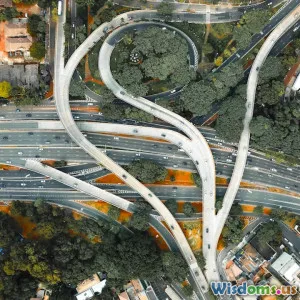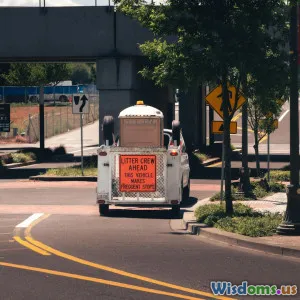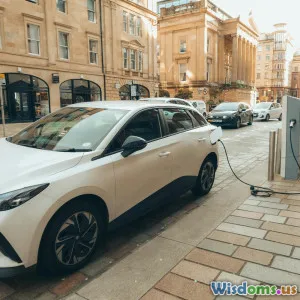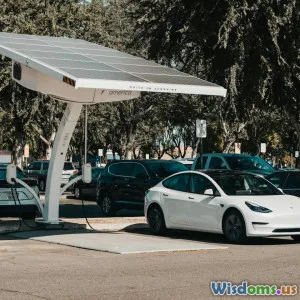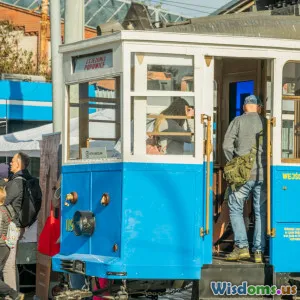
The Future of Public Transportation
7 min read Explore how emerging tech and sustainability are reshaping the future of public transportation worldwide. (0 Reviews)
The Future of Public Transportation: Revolutionizing How We Move
Public transportation stands on the brink of a transformative renaissance. With ever-growing urban populations, increasing concern for environmental sustainability, and rapid advancements in technology, the future of public transportation promises to reshape cities, economies, and daily lives. From autonomous buses to hyperconnected smart metros, understanding these emerging trends reveals a world where mobility is cleaner, smarter, and more efficient.
Embracing Electrification: The Shift Toward Zero Emissions
One of the most palpable changes reshaping public transit is the shift to electrified fleets. Across the globe, cities are investing heavily in electric buses, trams, and even electric ferries to combat air pollution and lower greenhouse gas emissions.
Real-World Examples:
- Shenzhen, China: The city successfully converted its entire bus fleet of over 16,000 buses to electric by 2019, decreasing urban air pollution and noise significantly.
- Los Angeles Metro: Their ongoing rollout of electric buses — aiming for a fully zero-emission fleet by 2030 — demonstrates policy commitment to clean transit.
Electric vehicles (EVs) in public transportation not only cut emissions but reduce operational costs over time due to lower fuel and maintenance expenses. Moreover, integrating renewable energy sources to power public transit amplifies environmental benefits. For instance, London's efforts to source electricity from wind and solar bolster the sustainability quotient of its iconic Tube network.
Autonomous Vehicle Integration: Redefining Efficiency and Safety
The advent of autonomous public transport vehicles is no longer science fiction. Self-driving shuttles and buses promise to increase safety, reduce congestion, and optimize route efficiency by minimizing human error and adapting in real time to traffic conditions.
Advances and Pilot Programs:
- Waymo Via Public Transit Partnerships: Collaborations with cities aim to integrate autonomous shuttles into first-mile/last-mile services.
- Stockholm's Self-Driving Buses: Trials underway for driverless buses that adapt routes based on passenger demand highlight adaptive transit’s potential.
Safety improvements are a primary driver. According to the National Highway Traffic Safety Administration (NHTSA), human error accounts for 94% of crashes. Autonomous systems could drastically cut accidents while enhancing services during off-peak hours by enabling cost-effective operations without human drivers.
Smart Infrastructure and Data-Driven Transit
Public transportation increasingly relies on digital infrastructure paired with data analytics to enhance user experience and operational efficiency.
Examples of Smart Innovations:
- Predictive Maintenance: Transit agencies use sensor data and machine learning to foresee vehicle and track maintenance needs, dramatically reducing downtime.
- Real-Time Passenger Information: Apps and digital signage give riders up-to-the-minute bus and train locations, wait times, and alternative route options.
- Dynamic Routing: AI-driven systems adapt bus and shuttle routes responsive to traffic and passenger demand patterns, improving timeliness and reducing energy waste.
The integration of Internet of Things (IoT) devices across the transit network paves the way for these capabilities. Osaka’s smart metro, meanwhile, uses AI and robotics not just for operations but for deep cleaning and crowd monitoring, ensuring increased hygiene and comfort.
Multimodal and Integrated Mobility: Seamless Transit Connections
The future calls for more than just improving individual transit modes — it demands harmonizing them via multimodal integration that simplifies the entire journey.
“The concept of Mobility as a Service (MaaS) integrates multiple forms of transport into a single accessible service, enabling travelers to plan, book, and pay effortlessly.” — Sampo Hietanen, MaaS pioneer
Cities like Helsinki have pioneered MaaS platforms that combine buses, trains, bike-shares, car rentals, and taxis in one interface. This increases the convenience factor, encouraging public transport use and lessening dependency on private cars.
Sustainability and Social Equity
Innovations in technology must coalesce with sustainability and equitable access goals.
- Electrified and efficient public transit reduces pollution, vital in the context of climate change.
- Designing transit to serve underserved neighborhoods ensures social equity, fostering economic opportunity and inclusiveness.
For example, Bogotá’s TransMilenio bus rapid transit system revolutionized the city’s mobility, lowering commute times drastically while offering affordable transit to millions.
Challenges Ahead
While the future is promising, significant challenges remain:
- Funding and Investment: Massive upgrades require sustained public funding and private partnerships.
- Infrastructure Adaptation: Existing infrastructure must be retrofitted to accommodate new technologies.
- Cybersecurity: Increasing reliance on software systems necessitates robust protections against hacking.
- Public Acceptance: Navigating public trust around autonomous and AI-powered transit requires transparency and education.
Conclusion: Driving Toward a Smarter, Greener Transit Future
The future of public transportation hinges on leveraging new technologies while ensuring sustainability and equity. Autonomous electric vehicles, smart infrastructure, and integrated mobility services collectively paint a compelling vision of cities interconnected by efficient, green, and intuitive transit.
As urban populations swell, the imperative to reimagine how public transit functions has never been greater. Stakeholders from policy makers to technologists must collaborate to transform good ideas into dependable, accessible systems. With thoughtful planning and investment, public transportation can move us relentlessly forward towards cleaner air, less congestion, and communities better connected than ever before.
Public transit’s future beckons — a future where every ride contributes not just to mobility but to a better planet.
Rate the Post
User Reviews
Popular Posts











